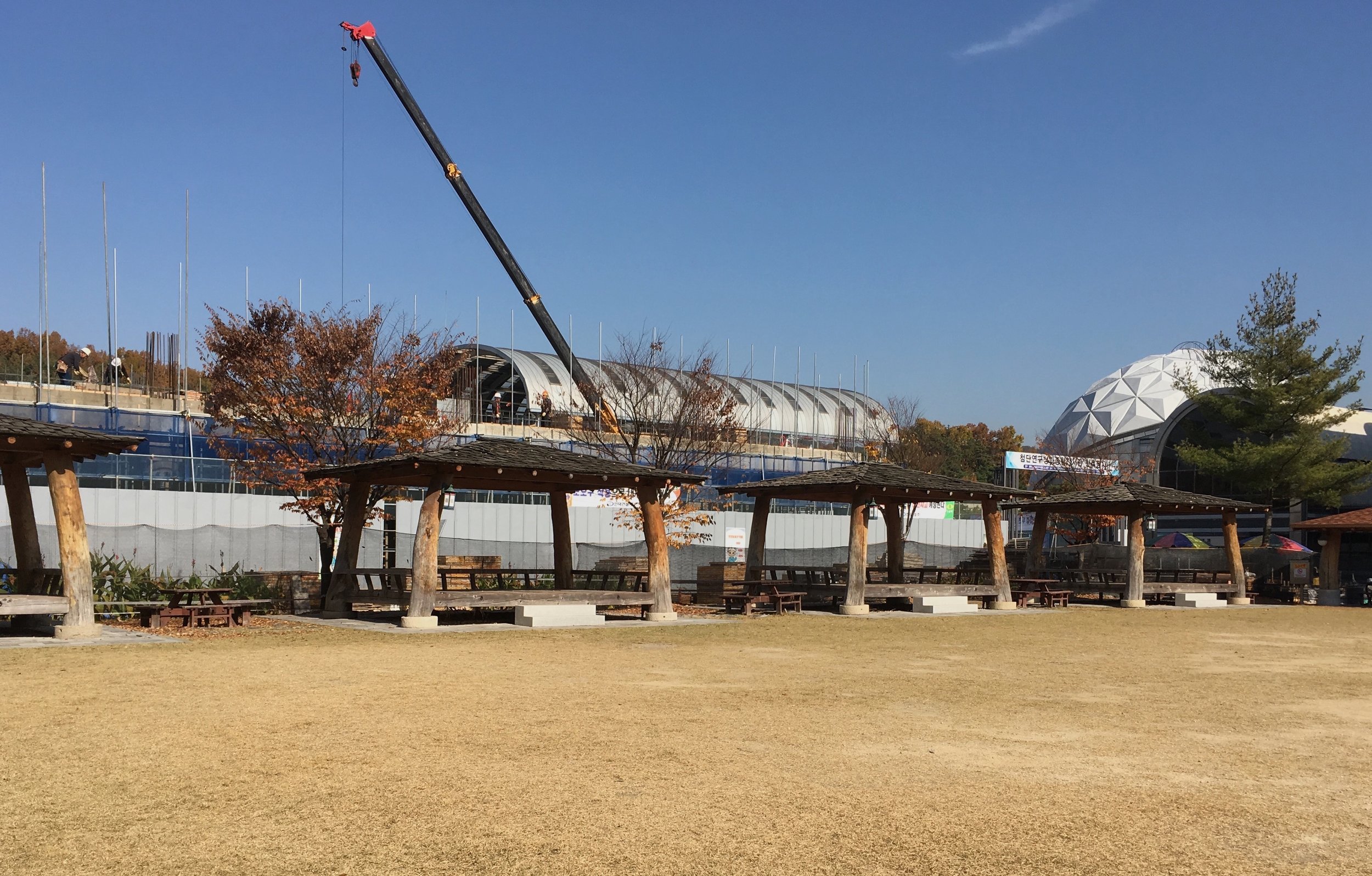NSM (Daejeon)
Daejeon, Korea. (ISSM Conference) I was invited to speak at this conference held at the National Science Museum. When I got a short break from our wonderful Korean hosts, I took a self-guided tour, sprinting through the museum.
Modern architecture side by side with traditional pavilions, which are probably used for visitor lunch time and museum events.
The interior is a cavernous patchwork of exhibition areas, delineated by lower wall partitions, without much transition or pacing from area to area.
This science museum aesthetic reminds me of a shopping center. Everything competes for the same level of attention, as if for shoppers, who may be driven more by distraction than attraction. There is a slightly dazed sense that we could be anywhere in the world.
Especially in this context, it's interesting to see how local cultural aesthetic permeates the more generic design approach. In a section about nuclear technology, models are treated as exquisite jewels, set into a wall geometry suggesting origami.
Visually elaborate icons are pervasive. I hoped they would help me read meaning, as a non Korean speaker, but for me it was hard work.
The choice of colors used with old artifacts and elaborate colorful animations.
The entry to the alcove about kimchee is elegant, and welcoming, like a bow.
English appears only with some titles, but like everywhere in the world, it also appears here and there as a "global" design element.
I confess as a westerner, my amazement that the ever popular outlined typography can be legible with alphabet systems such as this Korean Hangul.
At a science museum like this, a variety of design is no surprise. When some sections, like these, are visually simpler, with clearer focus, I wonder if it is due in part to a sponsor's involvement (?)
Like this history of technology area,
with white space, and an interaction between grey images and real shadows from the objects.
The lighting on this massive 4 sided, multi-tiered tower turned off and on in different vitrines, synchronized with related videos.
As usual, the (Korean) history of science and technology is located in a quieter area, top floor. As often happens, the historical area of the science museum shifts suddenly to the history museum stereotype, more dignified and restful for visitors.
The objects were stunning.
Science feels qualitatively different in a historical context. It meshes with culture, art, function, and belief systems, intrinsically. Even if the connections are not explained, they are still implied, effortlessly. Why is it more difficult to convey or to sense this relevance with current content?
In this world of busy icons, a plain rectangular icon is mysterious.
A gigantic ancient map of Korea is displayed on a curved vertical surface to make it easier to view as a whole.
I know it's a bizarre practice to sprint through a museum, looking at the design without diving into the actual experience and content! It's ironic too, because form follows _________(you name it). Perhaps it's dangerous, and maybe not "better than nothing". For me it raises my awareness about the most automatic, unconscious design associations we make.
I returned to the conference feeling grateful for the invitation to Daejeon, and lucky to be part of the cultural exchange within the museum world.


























